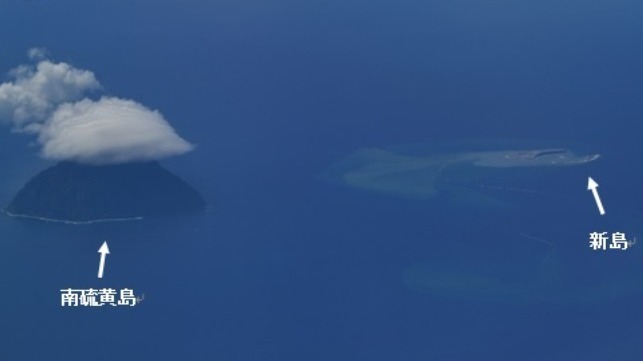Volcanic Eruption Creates New Island Near Iwo Jima

The Japan Coast Guard has detected the formation of a new island about 30 nautical miles to the south of Iwo Jima. An underwater volcano, Fukutoku-Okanoba, is in the midst of a large eruption, and its caldera is now poking slightly above the surface of the sea.
Japan's coast guard detected the new land formation on August 15, two days after the eruption began. When the volcano exploded and sent steam and ash soaring up more than 50,000 feet into the air - a plume that was easily visible from space - a surveillance plane was dispatched to investigate. The aircrew found a large drift of floating pumice covering an area about 35 miles in length. After a search, they also detected land - a crescent-shaped stretch of rock and ash.
???????????????????????????????8/13 5:50-15:40JST JAXA??????? pic.twitter.com/ZtCtoOIPKz
— DAN?? (@DANkashmir3d) August 13, 2021
Before the eruption, the top of Fukutoku-Okanoba lay about 75 feet below the surface of the Pacific. It last erupted in 2010, and discolorations of the seawater in its vicinity have been spotted frequently ever since.
Depending upon the composition of the new ground at the volcano's top, and the extent and duration of the eruption, it could form a permanent island. If it is ash and loose rock, it will be washed away by currents and storms, returning the volcano to its submerged status. The volcano has formed small islands three times before, in 1904, 1914 and 1986, but they have always been removed by the sea.

that matters most
Get the latest maritime news delivered to your inbox daily.
According to the Japan Times, the location of the island - between Iwo Jima and South Iwo Jima, roughly 24 17 N 141 29 E - means that if it does last, it would not have an effect on Japan's EEZ or territorial sea claims.
The eruption is ongoing, and the Japan Meteorological Agency has issued a warning for waters in the vicinity of the volcano. It cautions mariners to be wary of falling volcanic bombs, floating pumice and base surges (horizontal eruptions), which could all pose a risk to shipping.
